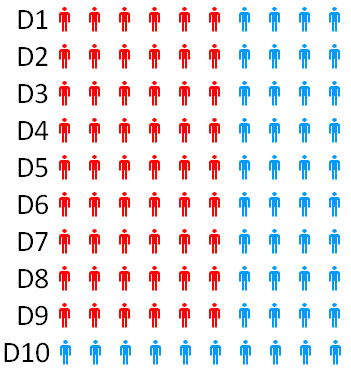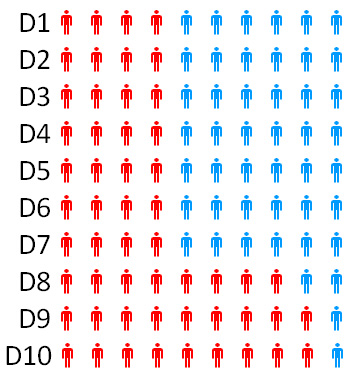Every ten years, the federal government conducts a census. The federal government does this because the Constitution requires it (in Article I, Section 2, clause 3). After the census in 2010, the federal government will apportion the 435 congressional seats among the fifty states. According to the latest projections, 29 states (including Tennessee) are not expected to change at all; 9 states will gain representatives (with TX gaining 4!); 12 states will lose representatives (NY & OH each losing 2). Net gain +7 for the Red states by the way – an important detail for the 2012 & 2016 presidential contests.
But reapportioning the 435 Congressman among the 50 states will be only half the census impact (and it’s the easy and straightforward half).
After each state is told how many Congress critters it will half, each state legislature will draw Congressional District boundaries within its state. How those boundaries are drawn is left totally up to the states (with a few caveats from the voting rights act which requires the creation of majority black districts where there is a large enough population in the state to support them).
The census data will be made available in April 2011, and most of the state legislatures will adopt their new congressional boundaries in the first half of 2012, just barely in time for the November 2012 congressional elections, which will have filing dates as early as April.
Tennessee has nine Congressman now and that number is not likely to change. Five of our nine Congressman are currently Democrats and four are Republicans (David Davis, Duncan, Wamp, & Blackburn).
But, isn’t Tennessee a RED state? Yes it is, as you can see from the last three presidential races:
2008 McCain beat Obama 57%-42%
2004 Bush beat Kerry 57%-42%
2000 Bush beat Gore 51%-47%
So how does a RED state end up with more Democratic congressman than Republican? Through the magic of redisctricting. Here’s how it works:
Imagine a state with 100 voters, 54 Red and 46 Blue, and 10 congressional districts.
How many of the ten congressional districts can be created as majority RED?
Answer: Nine
By assigning 10 Blue Voters to D10 and carefully distributing the remaining Red Voters, we can create 9 out of 10 congressional districts as RED districts. D10 will be the safest of safe BLUE Congressional districts, but the other nine should be reliably RED.
Using the SAME data, from the SAME state, without altering the percentages (54-46), how many BLUE congressional districts (out of ten) could be created?
Answer: Seven
D8, D9, & D10 will be very safe RED Congressional Districts, but D1-D7 should be reliably BLUE. Note that under the second scheme, the Democrats would hold 7 out of 10 seats, even though they are a minority party when the total statewide vote is considered.
Now do you understand why Marsha Blackburn’s district stretches from the Republican suburbs south of Nashville to the Republican suburbs east of Memphis?
Although the Democrats have been the minority party through the last three presidential elections in Tennessee, their clever districting scheme from 2002 has insured that they hold 5 of the 9 Congressional seats (instead of only 3 or 4).
In 2012, a competent demographer, with the population statistics and voting history by county and precinct, should be able to easily construct a congressional map for Tennessee that leaves Steve Cohen as a Democrat in Memphis, Jim Cooper as a Democrat in Nashville, and perhaps one other Democratic enclave in Knoxville. The other six Congressional seats should then be Republican.
If the Republicans keep control of the state legislature in the next election cycle (2010), and if they are as ruthless
thoughtful & wise clever as the Democrats, then Republicans should pick up two, and perhaps even three Congressional seats in Tennessee in the 2012 elections (going from the four current to perhaps 6 or 7 of the nine total).
By the way, the creation of “safe” districts for both parties explains why there is so little turnover in Congress.
Here endeth the lesson on re-apportionment and re-districting.
– Rob Shearer (aka RedHatRob)


We need to make room for more than 435 congressional seats. We also need to do away with “winner take all” elections… that leave half of the nation completely unrepresented in major offices such as the presidency. I like the UK’s parliamentary model…